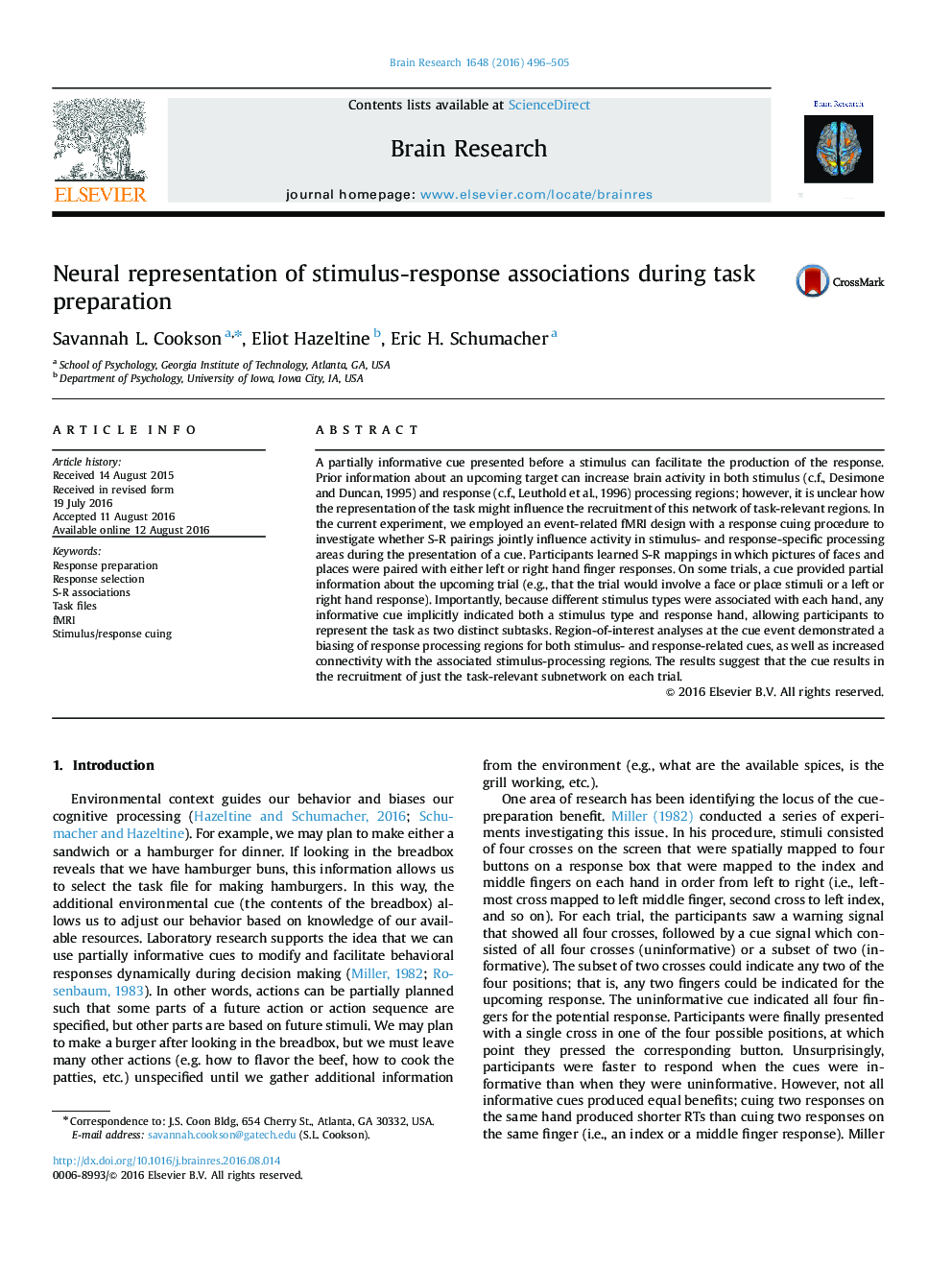| Article ID | Journal | Published Year | Pages | File Type |
|---|---|---|---|---|
| 6262340 | Brain Research | 2016 | 10 Pages |
â¢We investigated the neural correlates of task representation in sensorimotor regions.â¢Our event-related fMRI task allowed for hierarchical task representation.â¢Activity in motor processing regions was biased for both motor and stimulus cues.â¢Sensory-motor processing region connectivity was biased for the information in the cues.â¢Network recruitment at the cue is limited to those regions indicated by the cued subtask.
A partially informative cue presented before a stimulus can facilitate the production of the response. Prior information about an upcoming target can increase brain activity in both stimulus (c.f., Desimone and Duncan, 1995) and response (c.f., Leuthold et al., 1996) processing regions; however, it is unclear how the representation of the task might influence the recruitment of this network of task-relevant regions. In the current experiment, we employed an event-related fMRI design with a response cuing procedure to investigate whether S-R pairings jointly influence activity in stimulus- and response-specific processing areas during the presentation of a cue. Participants learned S-R mappings in which pictures of faces and places were paired with either left or right hand finger responses. On some trials, a cue provided partial information about the upcoming trial (e.g., that the trial would involve a face or place stimuli or a left or right hand response). Importantly, because different stimulus types were associated with each hand, any informative cue implicitly indicated both a stimulus type and response hand, allowing participants to represent the task as two distinct subtasks. Region-of-interest analyses at the cue event demonstrated a biasing of response processing regions for both stimulus- and response-related cues, as well as increased connectivity with the associated stimulus-processing regions. The results suggest that the cue results in the recruitment of just the task-relevant subnetwork on each trial.
